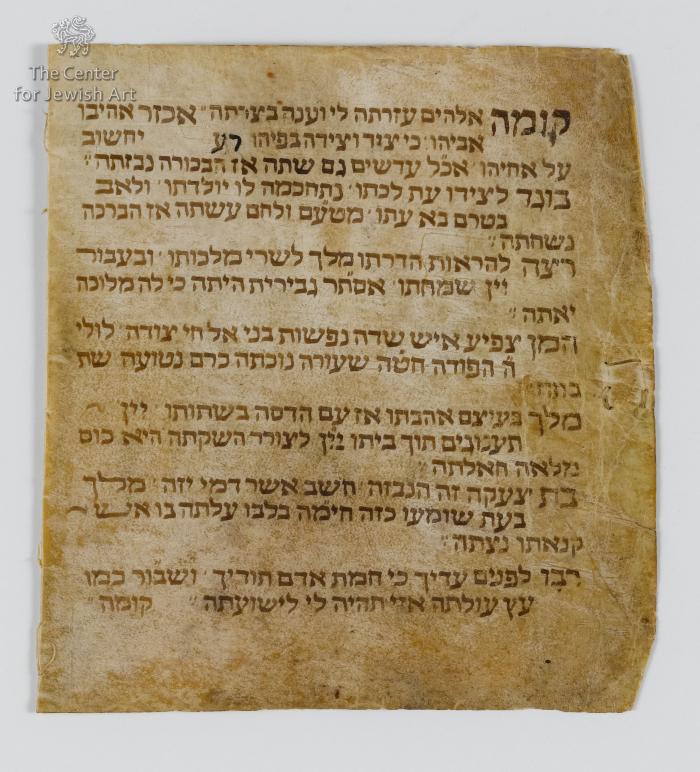Img. ID: 355558

The undecorated sheet that accompanies the scroll contains the text of the Kuma Elohim ezrata li poem for Purim.
The right edge of the first membrane is seriously damaged and the final section of the scroll is crumpled, but in spite of this, the manuscript is in good condition.
The Book of Esther in Hebrew is followed by a benediction panel including fragments of the Shoshanat Yakov poem. Another piyut - Kuma Elohim ezrata li is written on a separate sheet accompanying the scroll.
The scroll is formed of 4 sheets, containing in total 20 columns of text of 20-24 lines each, except for col. 17 which includes 11 lines divided into two half-columns. In the twentieth panel, a narrow column of text is written.
The lines of the text fit the shape of the panels, therefore they are of different lengths.
The number of the text columns per membrane: no. 1 - 5 columns, nos. 2 and 3 - 6 columns, no. 4 - 3 columns + additional texts.
The text is written in Hebrew square Oriental script in brown ink on the parchment membranes.
The letter ח (Es. 1:6) is very wide and formed of two parts joined with a roof and decorated with tagin. The letter ת (Es. 9:29) is not highlighted.
There is a decorated letter ע in the final word of the scroll.
The ruling is made with a hard point; only horizontal lines are visible.
The pricking is invisible.
The membranes in the scroll are stitched together.
None
According to William Gross: "It [the scroll] probably comes from the area of Essaouira and is quite unusual for Moroccan megiloth in having both a date and a place indicated on the scroll."
Text panels are of different widths.
There are Arabic numerals above each text panel; some of them are written in ink, while others are written in pencil.
The decorations are sketched in the same ink as the text of the Book of Esther was written.
The color scheme featuring this scroll is typical for many decorated Jewish manuscripts from Morocco.
The manuscript ends with a Hebrew note by its owner, Machlouf Abitzror, and says about Megillah reading in the town of Tizonin in 1889.
No bibliography on the scroll is available.



